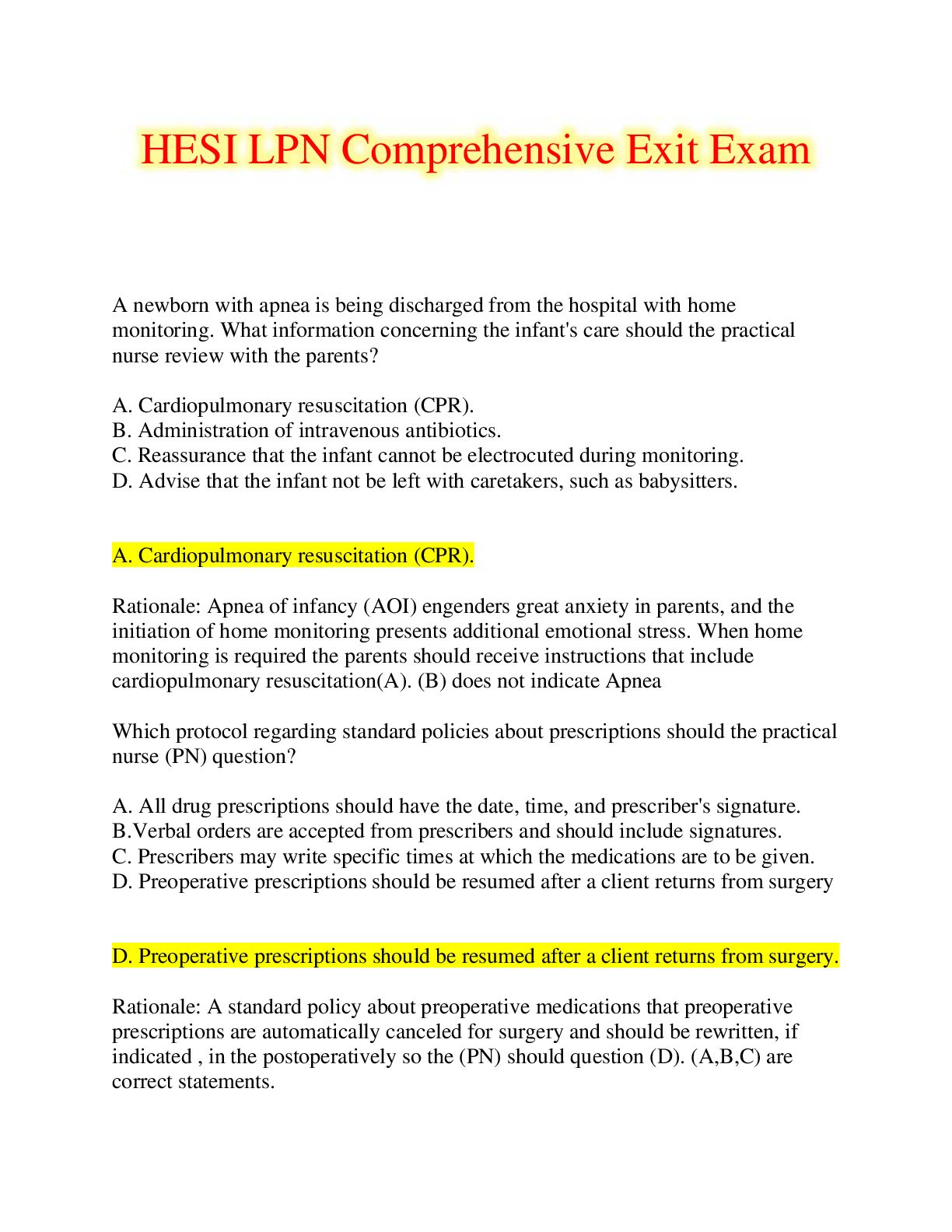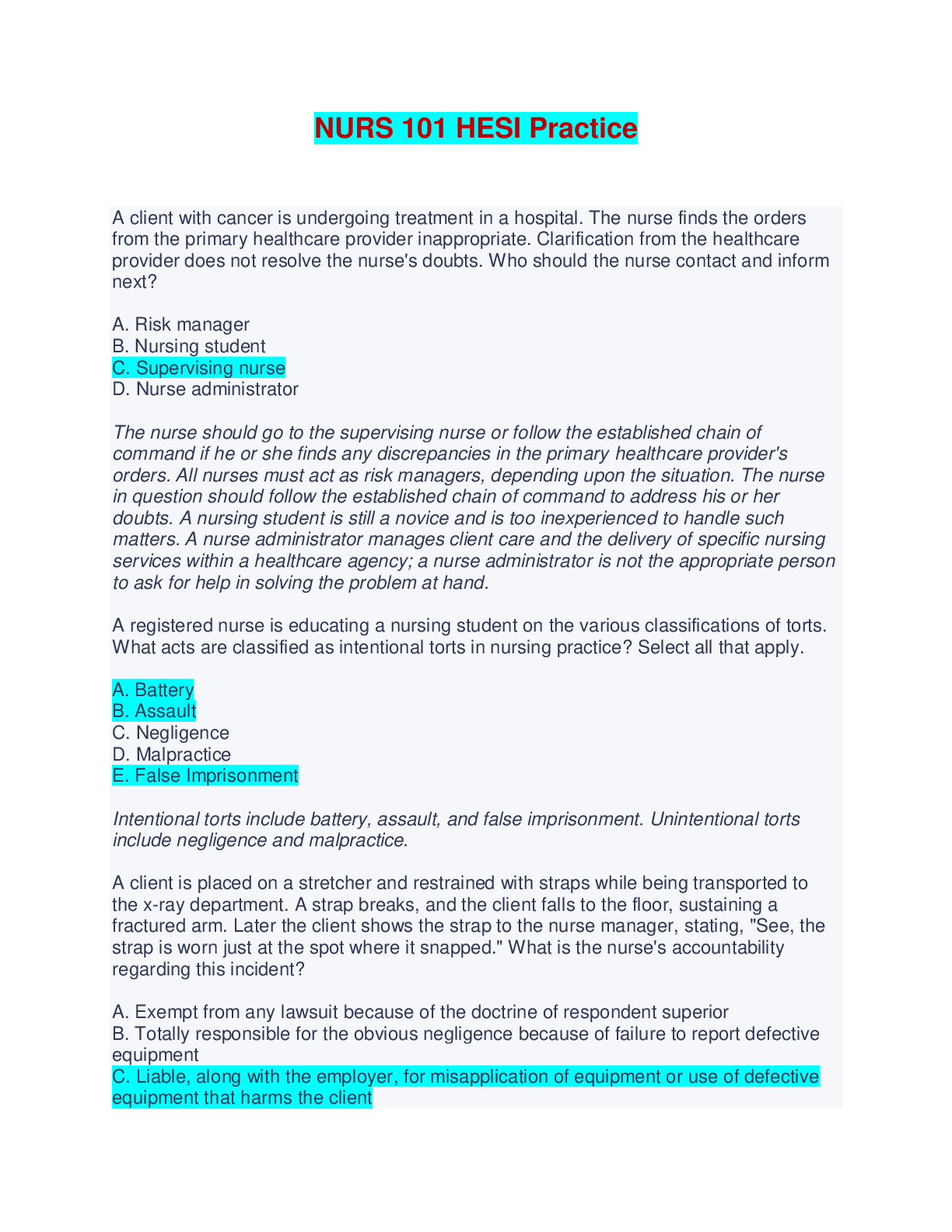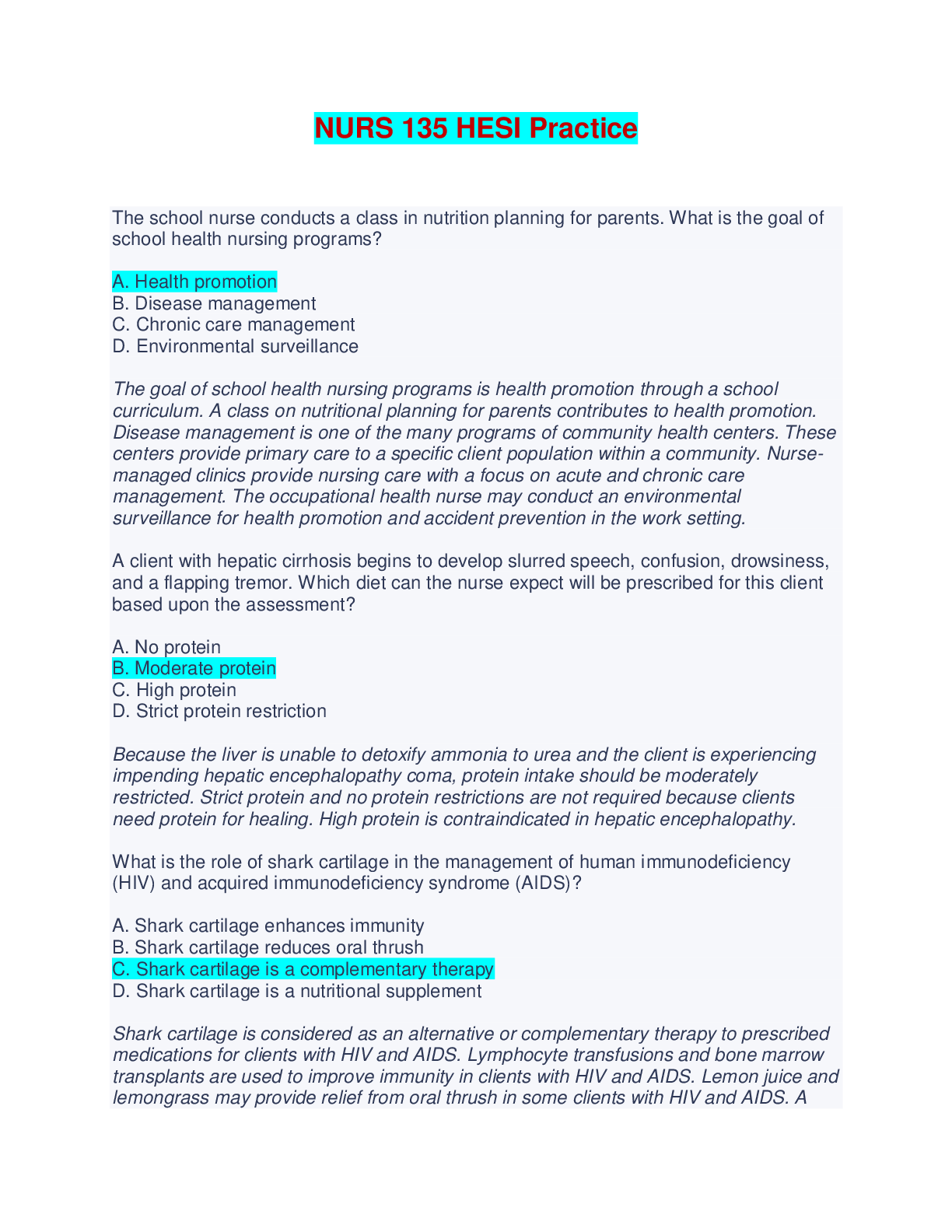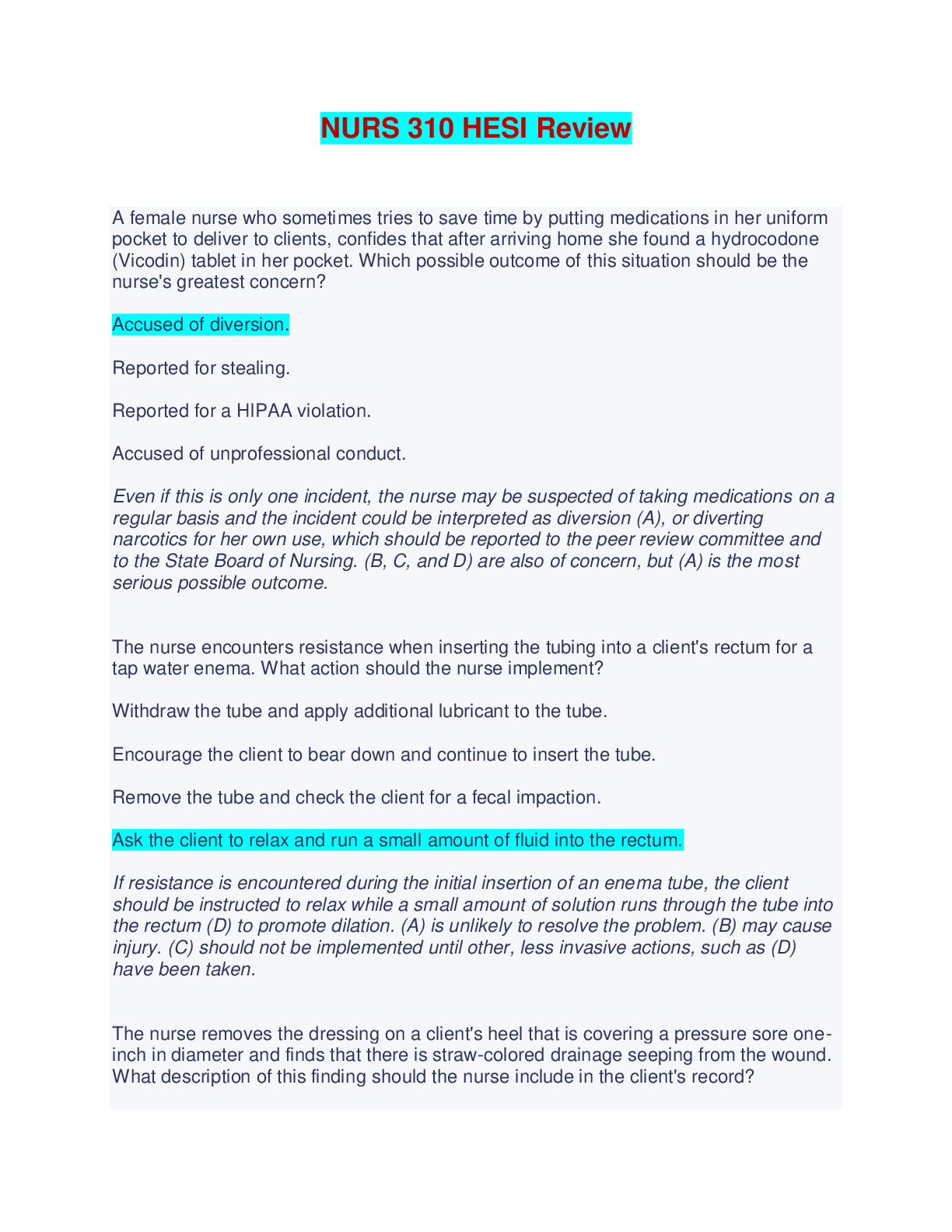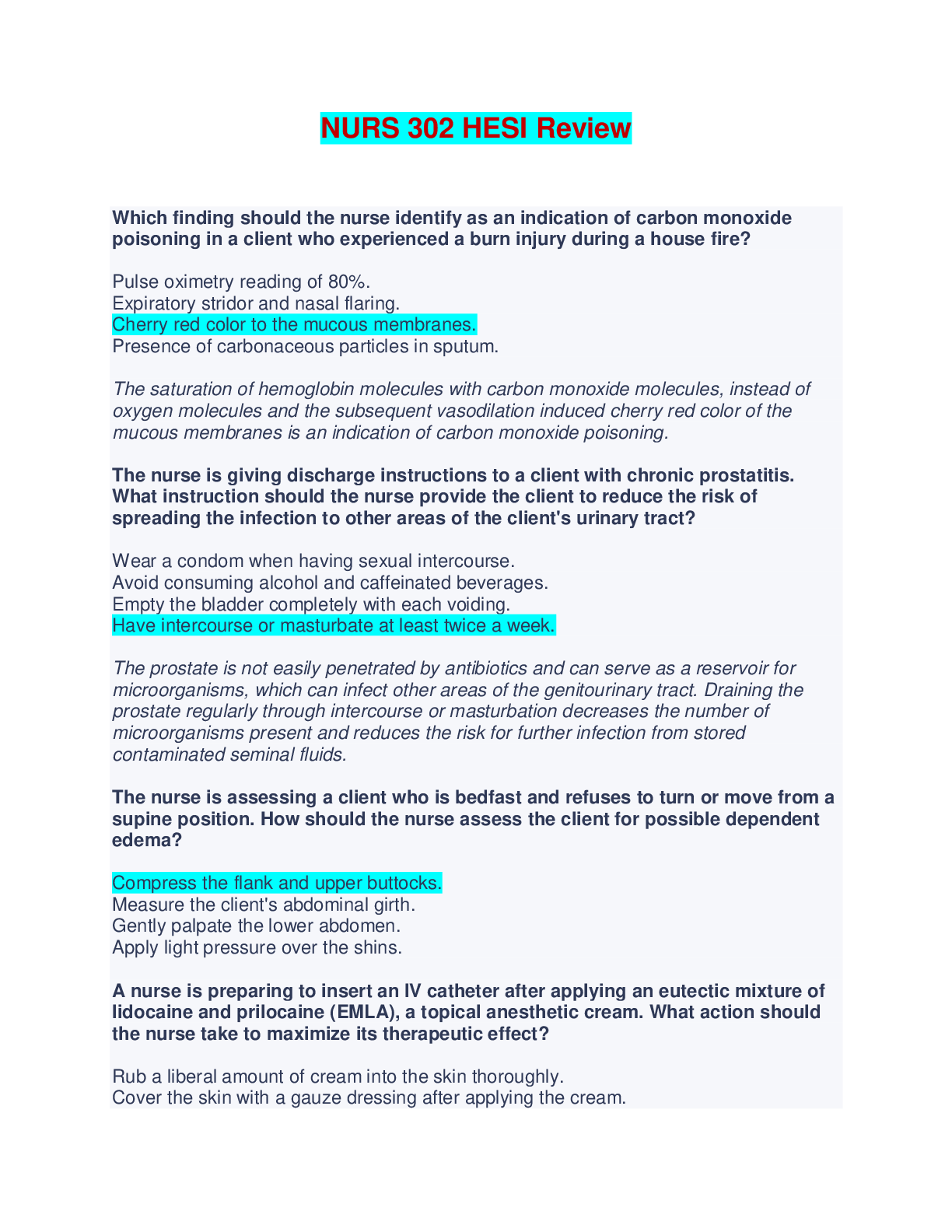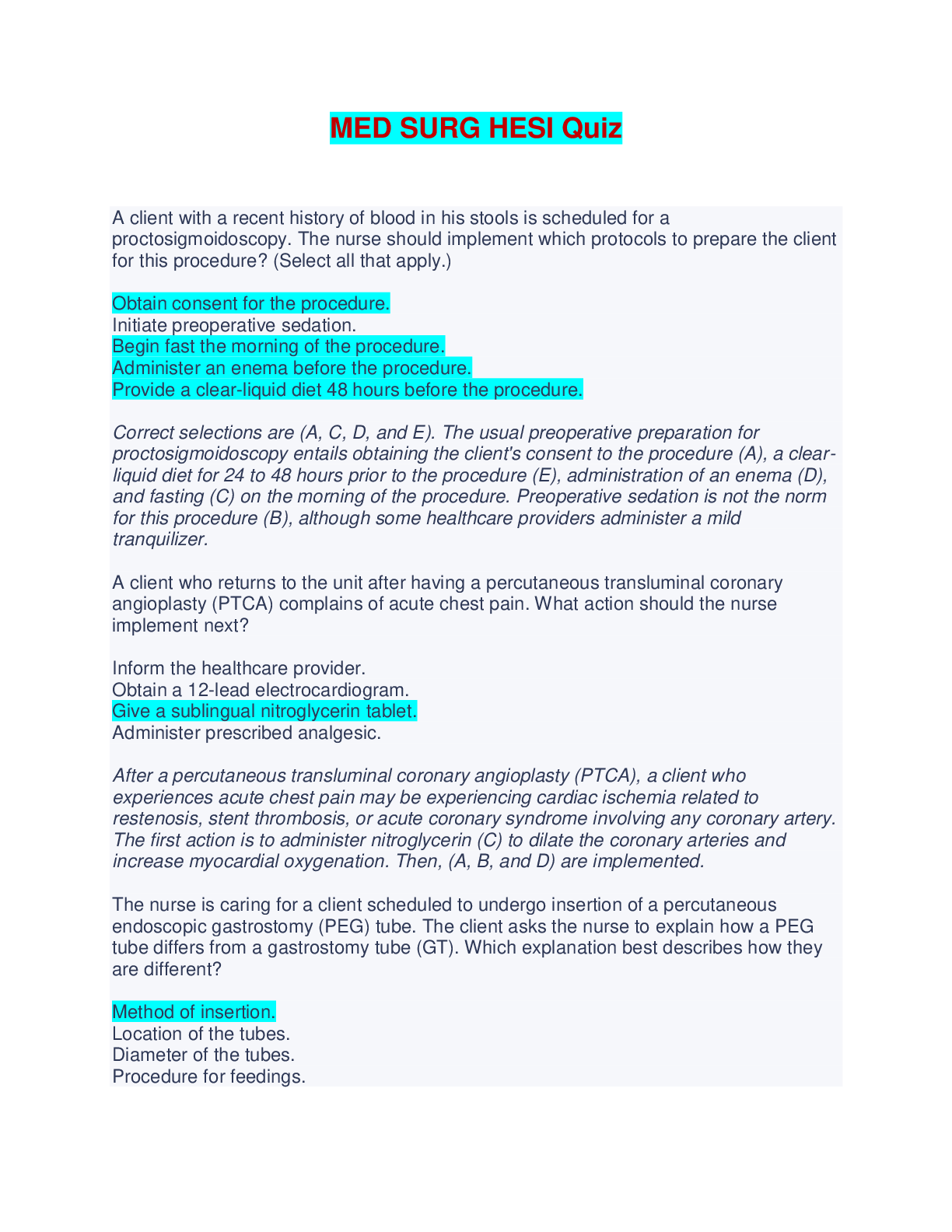NURS 125 HESI Practice - Questions, Answers and Rationales
Document Content and Description Below
NURS 125 HESI Practice - Questions, Answers and Rationales What information should the nurse include when teaching a client about antacid tablets? A. Take them at 4-hour intervals. B. Take them 1 ho... ur before meals. C. They are as effective as the liquid forms. D. They interfere with the absorption of other drugs. Antacids interfere with absorption of drugs such as anticholinergics, barbiturates, some antibiotics, and cardiac drugs. They may be taken as frequently as every 1 to 2 hours without adverse effects. Antacids should be given 1 or 2 hours after meals and at bedtime. Liquid antacids have a faster onset of action than tablets. The nurse provides teaching to a client who has received a prescription for oral pancreatic enzymes, pancrelipase. The nurse evaluates that teaching is understood when the client identifies which time for medication scheduling? A. At bedtime B. With meals C. One hour before meals D. Upon arising each morning The pancreatic enzymes (amylase, trypsin, and lipase) must be present when food is ingested for digestion to take place. At bedtime the food eaten for dinner has passed beyond the duodenum; at bedtime the enzyme is given too late to aid digestion. Taking pancrelipase one hour before meals or on arising each morning will have no chyme in the duodenum on which the enzyme can act. Steroid therapy is prescribed for a client with an exacerbation of ulcerative colitis. The nurse evaluates that teaching is effective when the client identifies which times for the medication schedule? A. At bedtime with a snack B. Three times a day with meals C. In the early morning with food D. One hour before or two hours after eating Taking the drug in the early morning mimics usual adrenal secretions; food helps reduce gastric irritation. Diurnal rhythms may be altered, and steroids are ulcerogenic; they should be taken with more than just a snack. Steroids cause gastric irritation and should be taken with food. Although food helps decrease gastric irritation, dividing the dose and taking it throughout the day may alter regular diurnal rhythms; it should be taken in the early morning with food. A nurse evaluates that a client understands appropriately how to take the antacids prescribed by the primary health care provider when the client makes which statement? A. "I will take this antacid at the onset of pain." B. "I will take this antacid 30 minutes after meals." C. "I will take this antacid every 4 hours around the clock." D. "I will take this antacid each time I have something to eat." Antacids are most effective when taken after digestion has started but before the stomach begins to empty. Antacids should be taken before the onset of pain; pain indicates that gastric irritation has begun, and the aim of treatment is to protect the gastrointestinal mucosa. Antacids taken every 4 hours around the clock interfere with the absorption of nutrients. Antacids taken with food interfere with the absorption of nutrients. A health care provider prescribes ranitidine for a client with heartburn. During a teaching session, which information will the nurse share with the client about how this drug works? A. Ranitidine increases gastrointestinal peristalsis. B. Ranitidine reduces gastric acidity in the stomach. C. Ranitidine neutralizes the acid that is present in the stomach. D. Ranitidine stops production of hydrochloric acid in the stomach. Ranitidine (Zantac) inhibits histamine at H2 receptor sites in the stomach, resulting in reduced gastric acid secretion. Ranitidine reduces, rather than neutralizes, gastric acidity. Ranitidine does not increase gastrointestinal peristalsis, and it does not completely stop production of hydrochloric acid in the stomach. Which information should be included in the teaching plan for the elderly client with peptic ulcer disease who is taking an antacid and sucralfate? A. Antacids should be taken 30 minutes before a meal. B. Sucralfate should be taken on an empty stomach one hour before meals. C. Sucralfate is prescribed for the long-term maintenance of peptic ulcer disease. D. Sodium bicarbonate is an inexpensive over-the-counter antacid with few adverse effects. Sucralfate works best in a low pH environment; therefore it should be given on an empty stomach either one hour before or two hours after meals. Sucralfate also should be administered no sooner than 30 minutes before or after an antacid. The acid-neutralizing effects of antacids last approximately 30 minutes when taken on an empty stomach and 3 to 4 hours when taken after meals. When sucralfate and an antacid are both prescribed, they are each most effective when the sucralfate is scheduled an hour before meals and the antacid is scheduled after meals. Sucralfate is prescribed for the short-term treatment of peptic ulcers. Its use is limited to 4 to 8 weeks. The client should follow the recommendations of the primary health care provider with regard to antacid selection. Sodium bicarbonate can produce acid-base imbalances which could be harmful, especially in elderly clients. Famotidine (Pepcid) is prescribed for a client with peptic ulcer disease. The client asks the nurse what this medication does. Which action does the nurse mention when replying? A. Increases gastric motility B. Neutralizes gastric acidity C. Facilitates histamine release D. Inhibits gastric acid secretion Famotidine decreases gastric secretion by inhibiting histamine at H2 receptors. Increases gastric motility, neutralizes gastric acidity, and facilitates histamine release are not actions of famotidine. A client with type 1 diabetes self-administers NPH insulin every morning at 8 am. The nurse evaluates that the client understands the action of the insulin when the client identifies which time range as the highest risk for hypoglycemia? A. 2 pm to 8 pm B. 8 pm to noon C. 9 am to 10 am D. 10 am to 11 am The time of greatest risk for hypoglycemia occurs when the insulin is at its peak. The action of intermediate-acting insulins peaks in 6 to 12 hours. Nine to 10 am and 10 am to 11 am are too soon for NPH to produce a hypoglycemic response. NPH insulin will have produced a hypoglycemic response before 8 pm and noon. A hypoglycemic response that occurs in 45 to 60 minutes after administration is associated with rapid-acting insulins. A nurse concludes that a client has a hypoglycemic reaction to insulin. Which clinical findings support this conclusion? Select all that apply. A. Irritability B. Glycosuria C. Dry, hot skin D. Heart palpitations E. Fruity odor of breath [Show More]
Last updated: 1 year ago
Preview 1 out of 16 pages
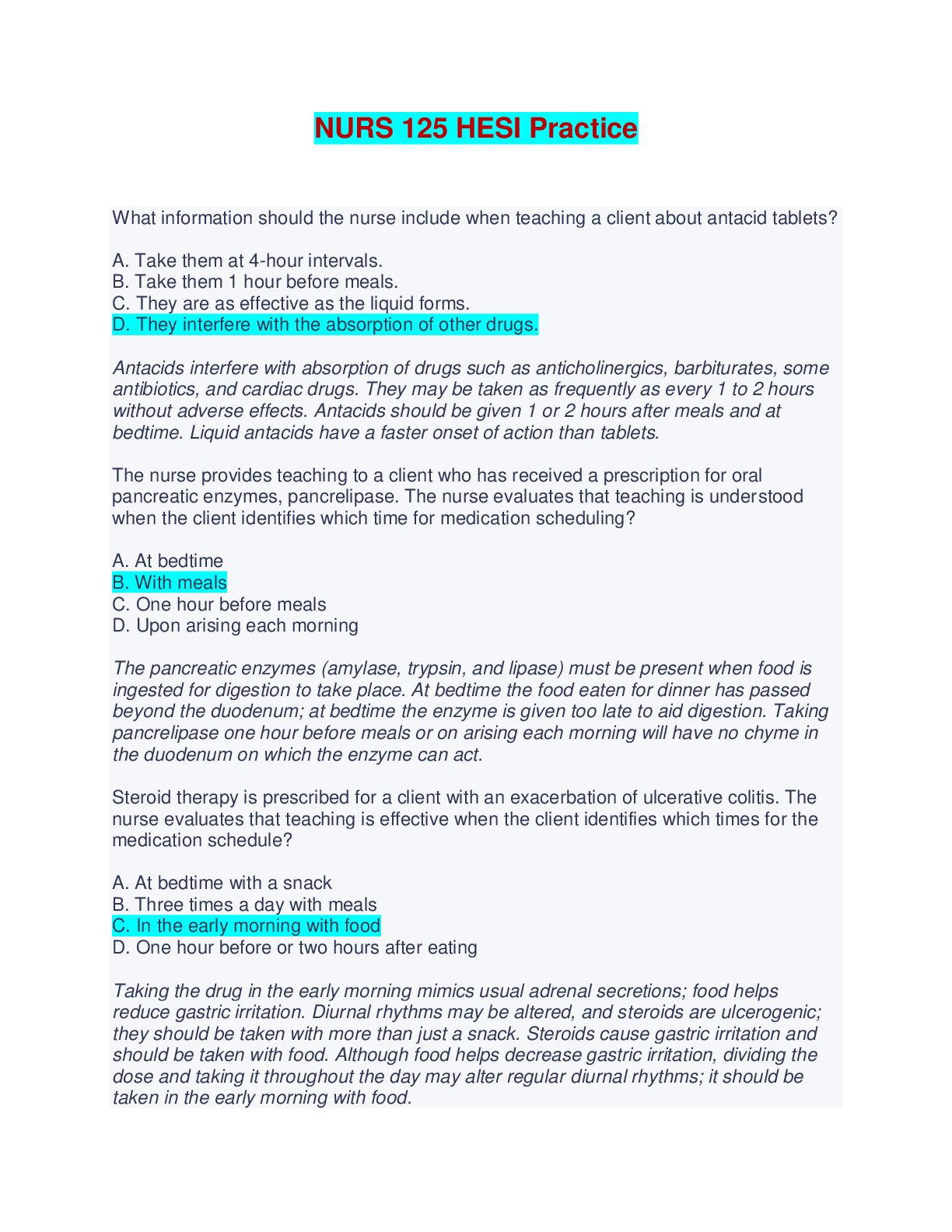
Buy this document to get the full access instantly
Instant Download Access after purchase
Buy NowInstant download
We Accept:

Reviews( 0 )
$16.00
Can't find what you want? Try our AI powered Search
Document information
Connected school, study & course
About the document
Uploaded On
Nov 16, 2023
Number of pages
16
Written in
Additional information
This document has been written for:
Uploaded
Nov 16, 2023
Downloads
0
Views
60



 V1 V2.png)













